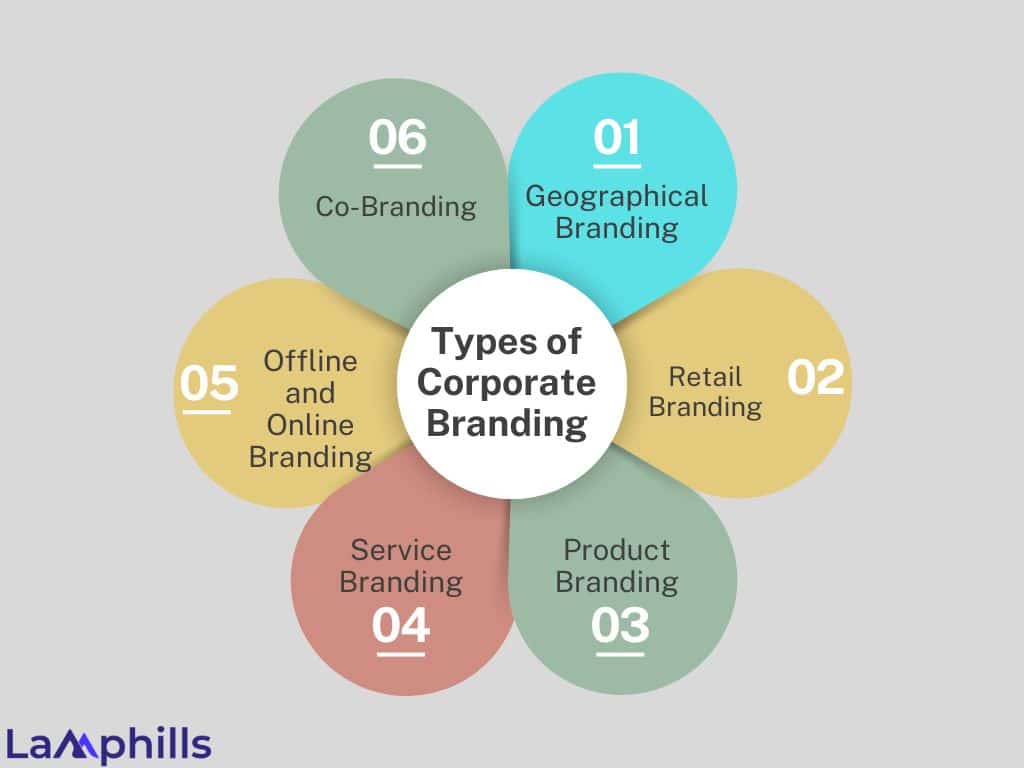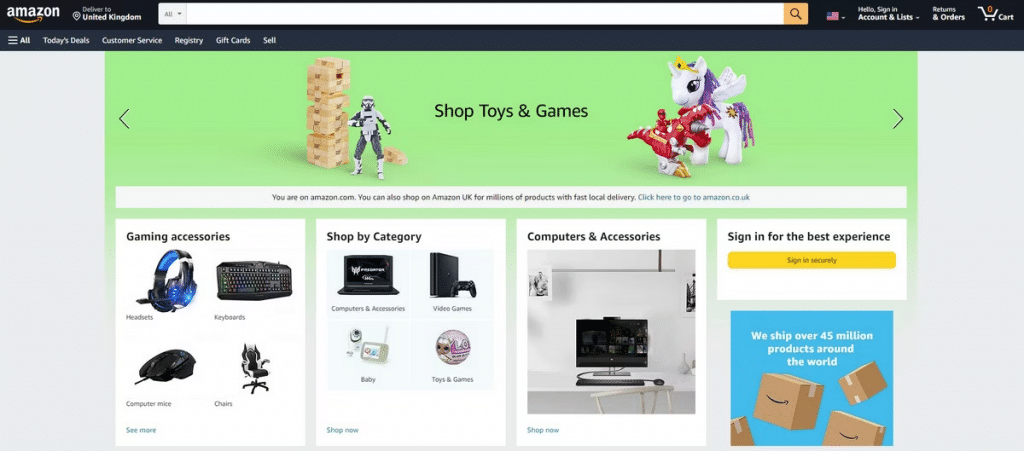Ad men on Madison Avenue in the 1960s would have you believe that corporate branding peaked in their smoky, martini-filled boardrooms. Still, they just set the stage for something that would eventually become innovative. In the decades that followed, businesses developed their concepts in novel ways, giving rise to some of the most recognizable brands in the world, including Apple, Google, and Tesla.
Corporate branding is the heartbeat of a company’s identity, which I’ve witnessed transform businesses from the inside out. I’ve felt the power of a well-crafted brand narrative to ignite passion, foster trust, and create lasting connections. It’s not just about logos or slogans; it’s the essence that resonates with every interaction. Through my journey working for some top business entities, I’ve seen how strong corporate branding can turn casual customers into lifelong advocates. In this guide, I will share important information about corporate branding, its importance, and how to create this branding strategy for your business.
Key Points
- Corporate branding is a broad term that encompasses marketing, advertising, and other efforts a company uses to promote the brand name and its elements.
- Corporate branding has evolved significantly since the 1960s, from simple logos and slogans to comprehensive strategies that shape a company’s identity, values, and mission.
- Types of corporate branding include geographical, retail, product, service, offline & online, and co-branding.
- Key elements of successful corporate branding include a logo, color palette, brand voice, typography, design elements, and brand imagery.
How Do You Define Corporate Branding?: What It Is
Corporate branding is a broad term that encompasses marketing, advertising, and other efforts a company uses to promote the brand name and its elements. It goes beyond the superficial aspects of a logo or a catchy tagline; it embodies the essence of a company—its brand values, vision, and mission. It’s a comprehensive strategy that aims to establish a unique and lasting image in the minds of customers, investors, employees, and other stakeholders.
Corporate branding is about weaving a narrative throughout your brand that resonates with your target audience, turning abstract concepts into tangible experiences that reflect the company’s ethos. This strategic narrative is not confined to visual brand identity alone. Still, it extends to all facets of the corporate entity, from customer service practices and company culture to product quality and marketing materials.
Types of Corporate Branding

Although types of corporate branding are not included in the definition of corporate branding, they play a vital role in this notion. They are necessary for assisting businesses in selecting the corporate branding materials and corporate brand strategy that will best serve their short- and long-term objectives. The most popular types of corporate branding that are worthy of exploring and trying in your endeavors to grow the market share are:
#1. Geographical Branding
Geographical branding involves tailoring the brand image and messaging to specific geographic regions or markets. It considers cultural differences, local preferences, and market trends to ensure the brand resonates with the target audience.
Geographical branding is common in multinational companies that operate in diverse regions with distinct consumer behaviors and preferences.
#2. Retail Branding
“Clothing brand ISTO has a brand identity built on transparency—a value it brings to life with this window display offering transparency into the cost of creating its products.”
Retail branding focuses on creating a memorable and enjoyable shopping experience for customers. It involves everything from store design and layout to employee interactions and customer service policies.
In addition, retail branding evokes positive emotions and builds long-term customer relationships, driving repeat business and word-of-mouth referrals.
#3. Product Branding
Product branding creates a distinct identity for individual products or product lines within a company’s portfolio. It involves developing unique names, packaging designs, and marketing campaigns to differentiate the products from market competitors. Additionally, as part of your product branding, you can use a QR code generator and include QR codes on product packaging to provide customers with additional information, user manuals, or promotional offers.
In today’s digital landscape, incorporating various types of corporate branding is crucial. This involves traditional logos and color schemes while leveraging modern tools and techniques. For example, utilizing QR codes can significantly enhance product branding efforts.
These codes can be integrated seamlessly into the packaging to offer consumers instant access to additional information, promotional offers, and user manuals. Marketers use QR codes for myriad purposes, from enhancing offline campaigns to driving online engagement.
Product branding drives sales and builds customer loyalty across your collections.
#4. Service Branding
Instead of focusing on tangible goods, service branding extends corporate branding concepts to intangible services. It entails creating a consistent customer experience, building credibility and trust, and explaining the service’s value proposition.
Service branding is particularly important in industries such as hospitality, healthcare, and consulting, where the quality of the service directly impacts customer satisfaction.
#5. Offline and Online Branding
Offline branding, such as traditional advertising, events, and physical store experiences, can complement online branding efforts, such as social media marketing, content creation, and search engine optimization. By integrating offline and online branding strategies, companies can create a seamless omnichannel experience for customers and maximize brand exposure across different touchpoints.
#6. Co-Branding
Co-branding involves collaborating with a different business or brand to develop a shared good or service. By fusing the capabilities of both companies, co-branding can increase brand visibility, attract new audiences, and provide customers with more value. Co-branding can take various forms, such as product collaborations, sponsorships, or co-marketing campaigns.
Why Is Corporate Branding Important?
A strong brand ensures customers remember your business and feel confident about purchasing. Consumers want to know more about the corporation behind the product, including whether it aligns with their values. Current corporate branding ideas embrace this concept by offering greater transparency on social media channels and leveraging digital marketing to grow their following and customer retention rates. Corporate branding is important because it can inspire greater revenue and company value.
Here are a few more reasons why corporate branding is important:
#1. It Enhances Marketing Strategies
A clear brand identity simplifies your marketing. Brands use catchy and memorable phrases to demonstrate how they help consumers. Marketing material tied to your corporate brand can boost your brand positioning.
This strategy has helped GEICO become known as one of the best vehicle insurers. In most GEICO ads, customers are reminded that they can lower their auto insurance costs by 15% or more in just 15 minutes. This straightforward concept is repeated frequently in the ads and its marketing.
Corporate branding enables you to use more effective content for your ads, social media posts, and other assets. Consistently speaking across your digital platforms, commercials, and other communication methods strengthens your brand identity. A consistent identity can improve product conversion rates, lead to returning customers, and accelerate the customer journey.
#2. It Establishes a Rapport With Customers
Customers start to see your company as more than a business that offers products and services. Corporate branding creates a new entity that becomes more relatable. Apple isn’t successful because it sells computers, iPhones, and other tech; many companies can produce and sell these same resources. Apple is successful because it delivers reliable products and has a strong brand that exudes innovation, high quality, and luxury.
Also, any sneaker will protect your foot. Still, Nike has surrounded itself with elite athletes for decades (and billions of dollars), claiming that their success in competition is partly a result of Nike products. These efforts facilitated the company’s ability to engage with customers, solidifying the “Just Do It” brand messaging.
Nike transformed the running sneaker market with the Vaporfly and Alphafly. These sneakers use carbon fiber plates to give runners an extra spring in their step. Other sneaker companies have created their version of the sneakers, but most runners still flock to Nike’s brand.
#3. Branding Distinguishes the Organization From Its Competitor
Customers consider businesses in ways other than just the logo. They consider various factors, including the company’s ability to make them feel good. People’s perceptions of your business are reflected in your corporate branding, which can help you differentiate yourself from the competitors.
Coca-Cola’s commercials feature friendly atmospheres to stand out from the competition. Many companies offer soft drinks, but Coca-Cola shows friends and family gathering for events and having a great time. The friends in these commercials happen to drink Coca-Cola. The commercials strengthen Coca-Cola as a brand that brings people together and provides them with refreshing beverages. Coca-Cola’s branding has captured the hearts of millions of consumers.
Coca-Cola advertises with a community orientation, while Pepsi targets younger consumers. While Pepsi and Coca-Cola battle for market dominance, neither firm is willing to compromise on its essential values to win over a few more people by altering its branding.
#4. Branding Increases Customer Awareness of a Company
Corporate branding helps customers remember your business, especially when they see it more frequently. After seeing it five to seven times, consumers find it easier to recognize a company’s accomplishments, messaging, and products. Because of this relationship, some customers will talk about your product or show it off in public. When someone takes out their iPhone, they show off the Apple brand. When runners wear Vaporfly sneakers, they inadvertently promote Nike’s brand. Corporate branding creates advocates who can turn into your company’s best marketers.
Elements of Corporate Branding
To develop a successful and comprehensive brand for your business, you must be aware of the different elements that go into creating it. These elements include:
- Logo (for starters, you can use an online logo maker to create one)
- Color palette
- Brand voice
- Typography
- Design elements
- Brand imagery
The critical point is that all these elements must complement each other and form a cohesive corporate brand design.
Examples of Corporate Branding
The best examples of corporate branding show us just how important the right brand strategy is to every company. Whether a small B2C business or a growing multinational enterprise, your brand determines how you connect with your target audience.
Now that we’ve defined corporate branding let’s dive into our examples. There are plenty of excellent examples of corporate branding out there. For today’s list, we’re focusing on some of the most well-known and reputable companies from across the globe.
#1. Deloitte

One of the best examples of corporate branding today, Deloitte positions itself as an innovator and thought leader focused on putting the customer first.
The company’s visual identity is simple and refreshing. The Deloitte logo features just the company name, with a simple green dot alongside it, symbolizing growth and transformation.
Like many long-lasting corporate organizations, Deloitte has refreshed its identity to appeal to a changing audience.
In 2016, the organization announced a makeover to its visual presence and a new structure focusing on bringing all of the Deloitte brand’s different components under one roof.
Of course, Deloitte’s powerful brand identity goes far beyond its visual presence.
The company consistently shares its corporate values with statements, blogs, and events designed to highlight its focus on transforming the world around us. Deloitte commits to regularly creating thought leadership content highlighting its organization’s knowledge.
Deloitte also believes in consistently supporting the betterment of the world with sustainable, ethical, and social practices. The brand is also extremely transparent, constantly sharing information about its evolutions through press releases and downloadable documents.
#2. IBM’s Corporate Identity Reinvention
IBM, a beacon among corporate brands, exemplifies the best corporate branding examples through its strategic overhaul. The company shifted its brand image from a hardware manufacturer to a leader in cloud computing and AI, appealing directly to its target audience of business professionals seeking innovative tech solutions.
This transition was supported by comprehensive marketing campaigns and the development of new marketing materials that aligned with its revamped corporate identity, showcasing the importance of evolving a company’s brand to maintain relevance and brand power.
IBM’s transformation taps into the core principle of strategic brand positioning by redefining itself in a way that speaks directly to its audience’s evolving needs. This pivot refreshed its brand image and reinforced its relevance in the modern tech landscape.
#3. Adobe
Adobe’s corporate product branding strategy leverages its suite of creative solutions to foster a strong corporate brand. By positioning itself as an essential tool for creatives and businesses alike, Adobe has enhanced its brand equity, making it a go-to solution for digital creativity.
The company’s focus on brand assets, from its visual identity to its marketing materials, underscores the importance of a well-defined brand identity in conveying its brand and value proposition to its target audience.
Adobe’s strategy illuminates the power of leveraging brand assets to bolster brand equity. By positioning its suite of creative tools as essential for both creatives and businesses, Adobe taps into the core of its target audience’s needs.
#4. Amazon

Amazon is the most influential corporate branding example in the digital world, particularly in the e-commerce niche. It is even a synonym for digital commerce. This multinational conglomerate also works in such sectors as cloud computing, digital streaming, and artificial intelligence.
In 2000, it transitioned from a digital retailer to a sales platform and enjoyed a staggering revenue of $469.822 billion last year. Clever rebranding and constant adjustments and enhancements of brand strategy helped this company fight the competition and become one of the most successful projects in the world.
The secret ingredient is that the team maintains consistency across consumer, customer, and employer sub-brands, regularly reinforces the brand image, and offers products and services that satisfy the ever-changing market’s needs.
What Is the Difference Between Branding and Marketing?
How to Create a Corporate Branding Strategy
A corporate branding strategy creates more consistency and establishes your company’s presence. This branding strategy can help you gain market share and build customer loyalty. Below is a comprehensive checklist guide to help create this strategy:
How to Create a Corporate Branding Strategy Checklist
Tips for Maintaining Strong Corporate Branding
After creating corporate branding, it’s important to ensure consistency because this helps the brand become more familiar to consumers. Here are tips for maintaining a corporate brand:
#1. Align All Marketing Efforts
To maintain consistency, share the same message in all marketing materials. For example, social media accounts can reflect the brand’s values. This may involve interacting with certain content or responding in a way that the brand style guide defines.
#2. Research Competitor Brands
Researching competitor brands to learn how they establish their corporate brand is useful. Through research, you can observe how competitors communicate their brand identity with consumers and how consumers react to it. These findings help inform your brand strategy with elements that work in your market.
#3. Establish a Visual Identity
Just like your brand voice will influence your brand’s copywriting, your visual identity will affect how your brand’s assets and touchpoints will look. Here are some tips for creating a visual identity:
- Think about how your visuals complement your values. Do you want your brand to appear simple, clean, and straightforward? Or would a maximalist visual identity support your brand’s mission more effectively?
- Do your homework. Ensure that all aspects of your brand identity make sense to your audience. Cross-reference your ideas with different cultures to ensure nothing gets lost in translation.
- Make use of free design tools. There are low-cost ways to build a brand identity. For instance, Canva can help you create advertising elements and marketing collateral regardless of your design skills and budget.
#4. Hone Your Brand Voice
Brand voice is your business’s personality and your way of “speaking” with customers. Whether your voice is motivational (like Nike) or silly (like Wendy’s or Old Spice), it should reflect your brand’s values and mission and speak directly to your customers.
“The brands that speak to everyone speak to no one,” says Morgan Brown, Shopify’s VP of marketing. To develop a brand voice that will resonate with your audience, ask yourself:
- What are a few adjectives that describe my brand’s personality?
- Given what I know about my audience, what’s the most appropriate way to speak to them?
- Who is a person (real or fictional) who my brand might emulate? Are we cool like Dominic Torreto or earnest like Ted Lasso?
Bottom Line
In conclusion, corporate branding is becoming more crucial than ever in the global market. It encompasses a company’s products or services and its entire identity—from messaging to social impact.
Businesses can leave a lasting impression on their customers and employees by taking cues from the best corporate branding examples and thoroughly reviewing this guide. Let the top performers above inspire you to elevate your brand and dominate the market.
Similar Articles
- Small Business Branding Ideas: 15 Creative Ideas for 2024
- Top 10 Corporate Social Responsibility Strategies for 2024: A Guide for Modern Businesses
- The Importance of Branding in Financial Services (+ Examples)






